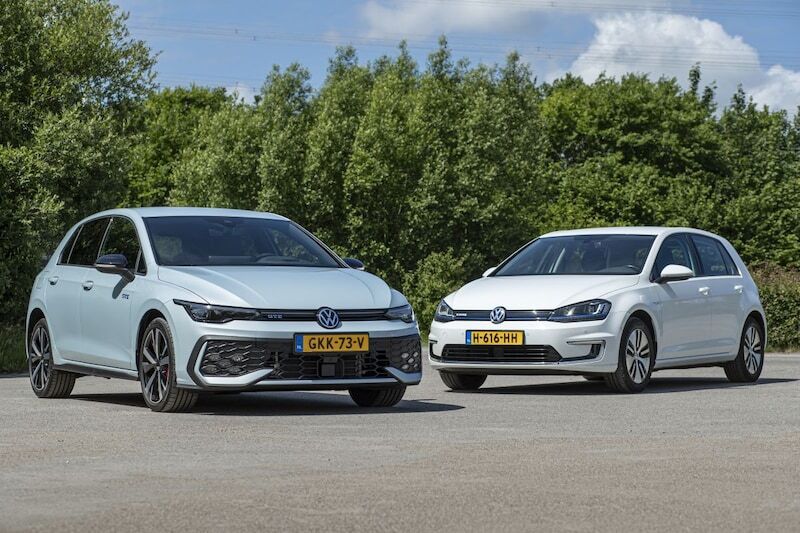
Volkswagen e-Golf (2015) vs. Volkswagen Golf GTE (2025)
116 electric hp on the front wheels, a battery of about 20 kWh and a maximum of 40 kW fast charging. This applies to both the ten-year-old Volkswagen e-Golf and the brand new Golf GTE. Only the latter also has a 177 hp gasoline engine.
Justified or not, range still plays a major role when it comes to electric cars. A modern Volkswagen ID3 can travel almost 400 kilometers on a full battery in its basic form, and that is by no means a record holder in that area. Developments are also happening very quickly with plug-in hybrids, especially recently. 50 kilometers electrically was the norm here for years, but nowadays double that is almost normal.
This is largely due to the Volkswagen Group, which with the latest generation eHybrid powertrain, standardly screws a battery of almost 20 kWh under plug-in hybrids. That is almost exactly what the e-Golf, the first fully electric Volkswagen in mass production, also had. The (electric) motor power of 85 kW/116 hp even corresponds exactly, just like the fast charging power. The new Golf as a plug-in hybrid is therefore essentially an e-Golf, but with a powerful 1.5-liter four-cylinder as a back-up. Right?
Of course, purely electric is not the same
Well, not quite. Even if we limit ourselves to the purely electric part of the GTE, the powertrain works in a very different way. With the electric e-Golf, it directly drives the front wheels, while the electric motor in the modern plug-in hybrid is incorporated into the DSG automatic transmission. You can even shift with the flippers behind the steering wheel in electric mode, an unnecessary but amusing side effect of this setup. The Golf GTE is therefore less efficient on electricity and theoretically travels a lot less far on electricity than the first e-Golf, with 132 versus 190 kilometers.
It is important to note that the e-Golf was still tested with the generous NEDC method, while the consumption of the new Golf GTE is of course determined in the somewhat more realistic WLTP manner. In practice, the difference was a lot smaller with us and we are impressed with the power consumption of both cars, which is simply very neat for the type of car and the age of the e-Golf.
This is how far we got in practice
With the first e-Golf we get 157 kilometers on a full battery. The power consumption we record is 13.0 kWh/100 kilometers. Ten years later, the all-electric Golf still manages to trump its plug-in hybrid offspring, but with the GTE we still travel 123 kilometers in practice. This puts it quite close to the factory specification of 132 kilometers, a lot closer than the e-Golf is to the NEDC specification. During the ride, the electric motor needs 15.7 kWh/100 km of energy, which is even better than the factory specification. For this time, we have also measured the acceleration of a plug-in hybrid. For the 0-100 km/h sprint, the GTE needs 10.8 seconds on electric power alone, the e-Golf 10.4. The e-Golf also narrowly trumps the sporty-looking GTE in top speed, with 140 to 130 km/h. If you fully depress the pedal in the GTE and the combustion engine kicks in, it is of course a completely different story and the GTE flashes to one hundred in 6.3 seconds, and it runs 230 km/h.
Up to 143 kilometers electric
Then we also have the GTE version of the new Golf, which is less efficient due to its larger wheels than the regular e-Hybrid. Unfortunately, that was not available to us, but it has the same electrical components as the GTE. The difference is a lower total power of 204 instead of 272 hp, and the sporty trim that the eHybrid does not have. Such an eHybrid, according to Volkswagen, even travels 143 kilometers in the best case, an impressive performance for a plug-in hybrid.
NEDC versus WLTP
Now a similar caveat can be placed with the e-Golf, because we are emphatically talking about the first generation of that model here. That was unveiled in 2013 with a range of just under 200 kilometers. Volkswagen gave the e-Golf a facelift in 2016 that was accompanied by more power, a larger battery and a range of 230 kilometers WLTP. That car is therefore richly superior to the GTE when it comes to electric performance, and is logically also more popular as a used car.
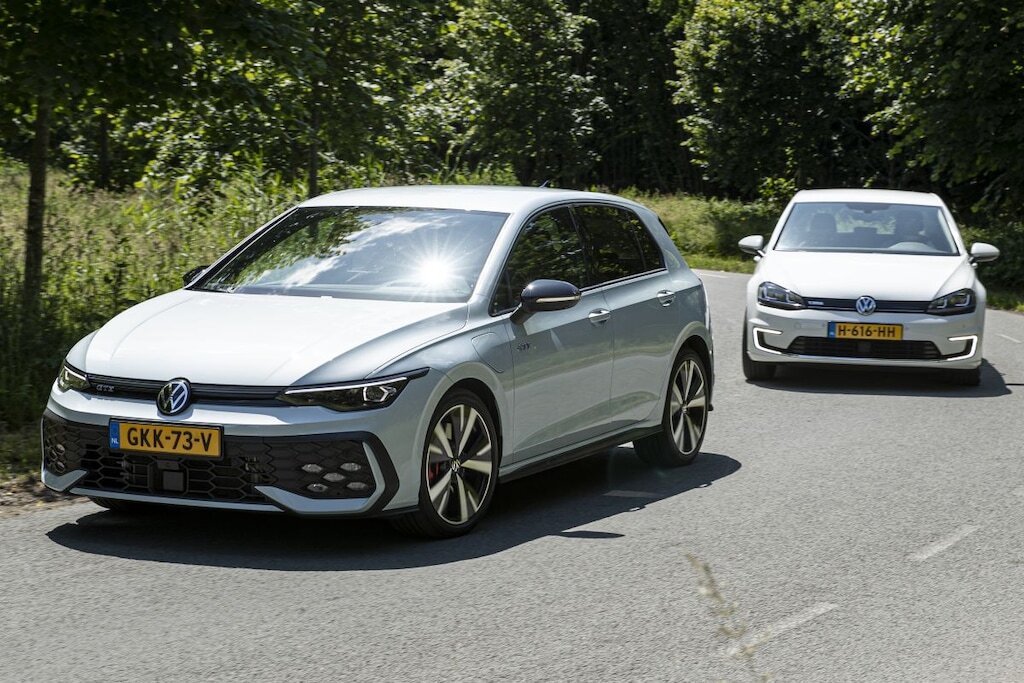
Volkswagen e-Golf still nice
We found a neat copy of the original model at Grib Automotive in Sassenheim, including the original and streamlined wheels. We immediately notice how nice such a fully electric Golf still is. It feels nice and normal in everything, can be operated in a clear and conventional way, has a solid interior and drives extremely pleasantly. The fine seating position also contributes to driving pleasure, although it must be said that the seats in an e-Golf are just a little higher than in a regular Golf of this seventh generation. When it comes to misses, we mainly note the absence of an exact meter that shows battery percentage.
Moreover, the ten-year-old Golf still comes across as very high-quality. The sound of a closing door, once a true spearhead for Volkswagen fans, is also finer in the older Golf than in the new Golf. Yet that GTE is also a pleasant car. It looks a bit more pretentious with its spoilers, LED garlands and large wheels and has a solid digitalized interior, but in its latest form it does have a lot of Golf DNA. The ergonomics may not be as well organized as in the ten-year-old predecessor, but it is a lot better than in the first Golf 8. The large screen looks nice, smart shortcuts make interaction easy and such an extensive digital cluster is very nice.
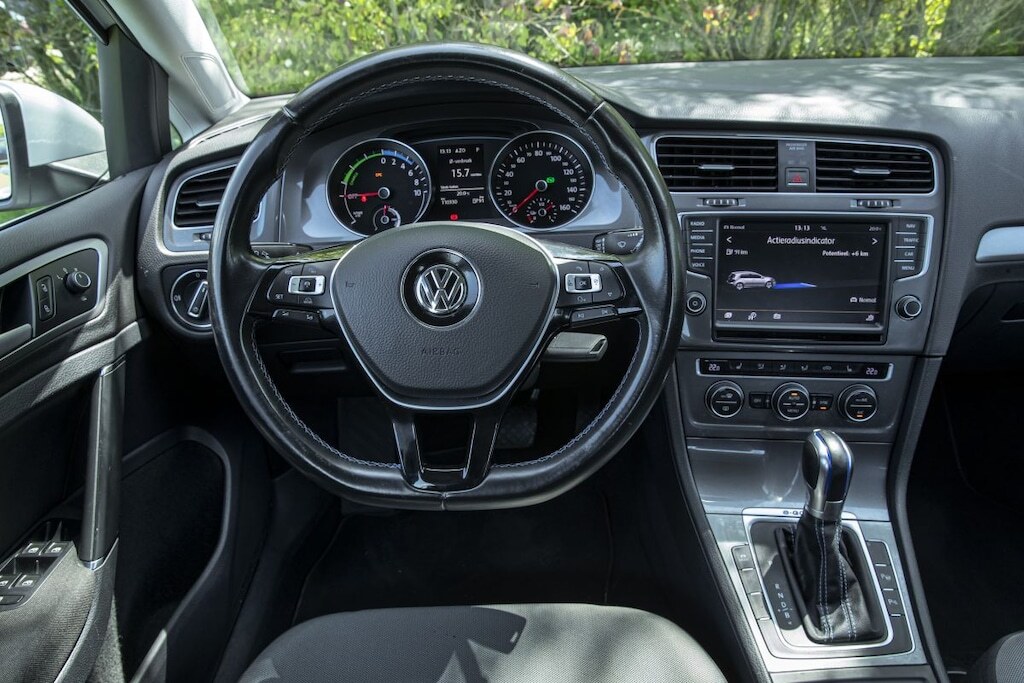
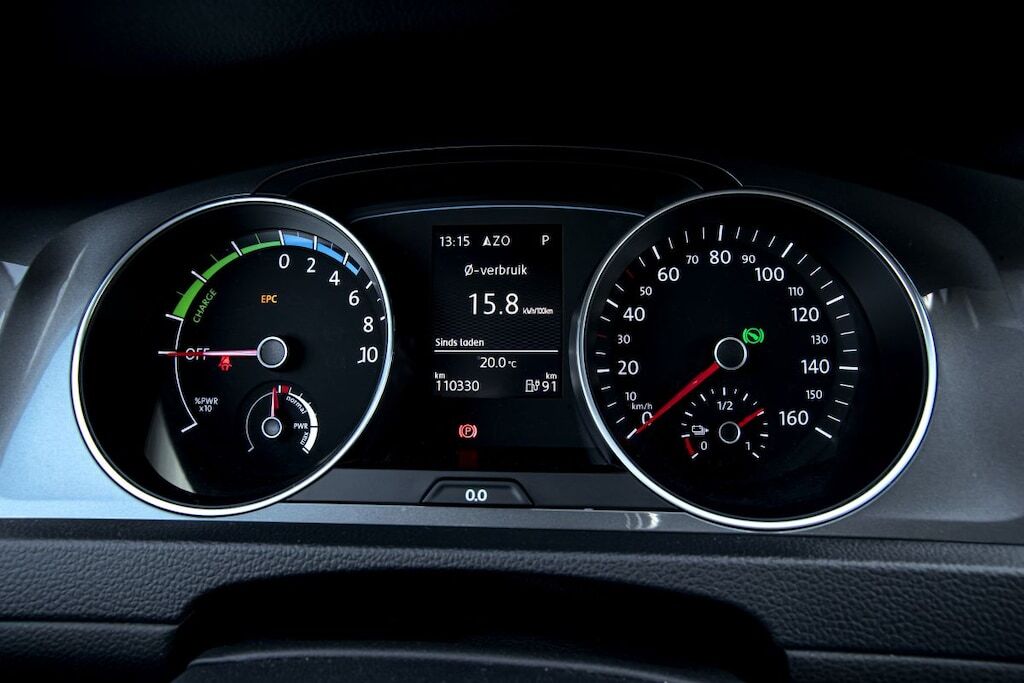
GTE is an all-rounder
Although the GTE is certainly not a GTI when it comes to handling, it does offer some extras with its sporty seats, thick steering wheel, extra power and adaptive chassis. Purely on electricity, there is of course no question of that extra power and you have to anticipate through traffic to keep up well. Then you also have to be careful that the gasoline engine, which you rarely use due to that large battery, does not have to go full throttle stone cold.
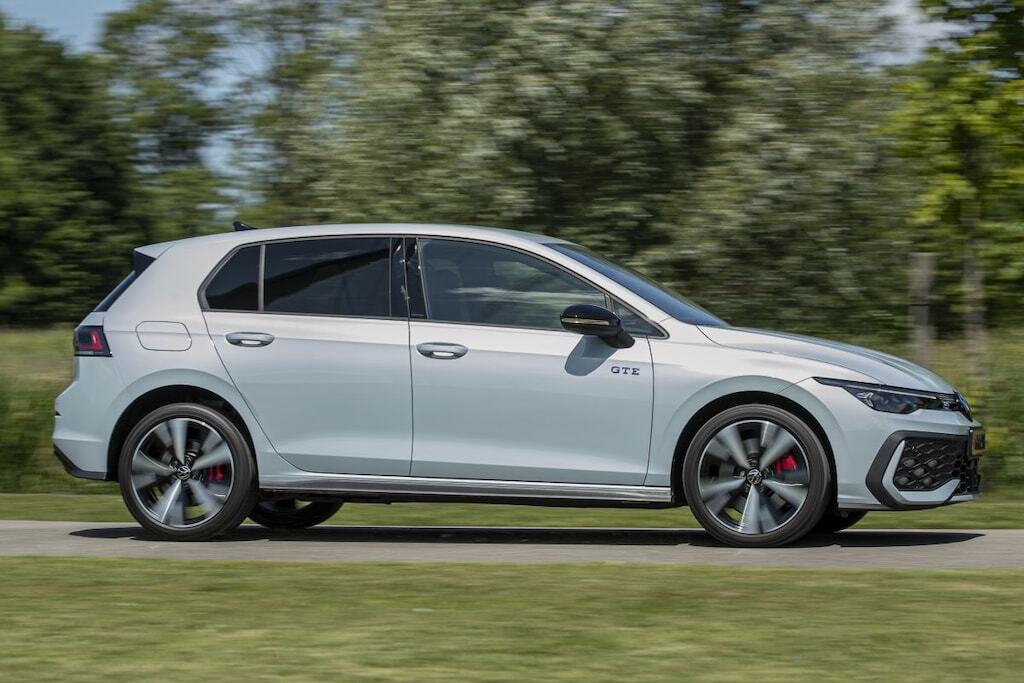
Anyone who handles it with care has a real all-rounder in the hybrid Golf GTE. Nice and dynamic, but also quiet and comfortable if desired, and both efficient and fast thanks to that powertrain. Widely applicable, and that’s how a Golf should be.